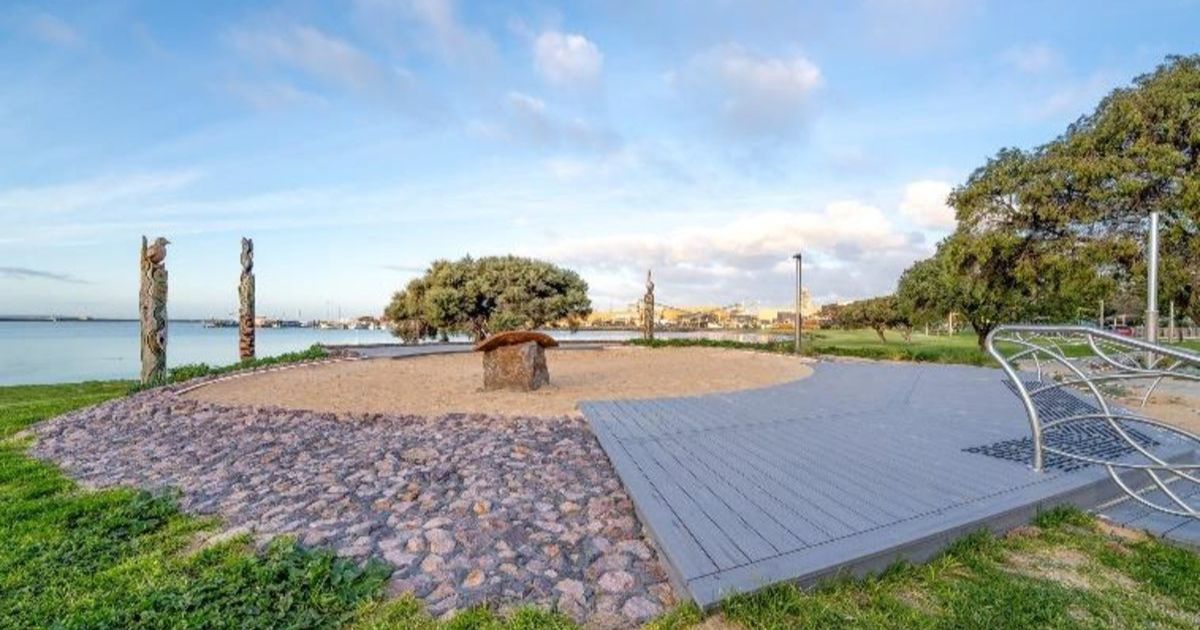Community rallies to protect farmland
Led by the recently formed Limestone Coast Sustainable Futures Association (LCSF), the grassroots campaign is raising awareness of the significant threat that controversial mining practices pose to the future productivity of local agricultural industries due to lost soil profiles, risk to underground water resources, loss of biodiversity and ultimate impact to community wellbeing.
The region’s highly productive agricultural land delivers one third of the state’s farming GDP, with the group campaigning for the region to be protected from controversial strip-mining activities.
To support long-term regulatory reform, the association is demanding the State Government undertake an independent vulnerability assessment to comprehensively evaluate the risks and ultimate impacts of proposed strip-mining operations on the local environment and long-term consequences on economic and social well-being.
LCSF chair and local farmer Todd Woodard said this detailed evidence-based research was critical to ensure strip mining activities would not compromise agricultural production and impact local jobs, or indeed jeopardise environmental or cultural value.
Exploration licences currently cover more than 30 per cent of the Limestone Coast region, stretching from Keith in the north to Mount Gambier and Kingston in the south, with immediate concerns of a mining lease being granted 35km south east of Naracoorte as part of the Koppamurra Project.
The Federal Government last week announced that its project proponents AR3 had been awarded $5 million to support project planning and to build investor interest (see page ?? for AR3 funding announcement story).
Mr Woodard said urgency was building for the State Government to prove mining would not impact the long-term productivity or water security in the region, with the need for tighter regulatory controls on mining proponents to deliver greater transparency on their project plans.
“Our soils are our lifeblood – we are rallying as a community, fighting to protect the long-term sustainability of our food and fibre industries and its extensive value chain which would be devastated by the projected short-term gains of these opportunistic mining companies,” he said.
“The proposed style of mining is one of the most aggressive forms of mineral extraction. The process takes everything in its path from the surface trees, vegetation and infrastructure, digging down to extract from the clay base, devastating the soil structure, macro minerals and biology of the earth.
“Whilst existing frameworks are in place under the Mining Act to manage mining activities, rural Australia is littered with examples of malpractice and irreparable damage leading to disturbing environmental and economic outcomes.
There is no compensation adequate to restore the land back to its original state and the government must provide a higher level of protection, committing to pause mining activities in the Limestone Coast until a thorough independent risk assessment is made.”
Alana Davies, a local business leader and farmer, said it was feared rare earth mining activities would permanently alter the topography of the land, removing dips and swales, which provide transient water courses for birdlife and riparian species, and unique runaway holes that recharge the aquifer.
“Our finite water resources are precious. Mining activities pose a major threat to water security due to risk of contamination from heap leaching and destruction of the topography of the land which naturally hydrates the aquifer,” she said. “Once broken this cannot be restored, forever impacting our environment and the rich food and fibre sector it sustains.
“The government must commit to investing in comprehensive independent research to prove our community will not be negatively impacted by any such activity, protecting our high value agricultural land and key environmental assets from destruction. This is about safeguarding the wellbeing of our community for future generations.”
To support the campaign or purchase an #SaveOurSoils corflute visit www.limestonecoastsustainablefutures.com.au
OUR REQUEST OF GOVERNMENT
Limestone Coast Sustainable Futures Association seek an exemption from rare earth mining activities in the Limestone Coast. It is urging the State Government commit to a vulnerability assessment undertaking a comprehensive, science-based, independent investigation exploring the potential impacts of strip-mining activities to support informed decision making. The study would investigate rare earth mining impact on:
• Water resources of the Lower Limestone Coast including Prescribed Wells Area (confined and unconfined aquifer)
• Investigate the process and effectiveness of rehabilitation techniques in the local landscape.
• Understand the long-term impact to the topography and unique geology of the landscape, such as ability to drain water, sustain wetlands and ground water dependent ecosystems.
• Impacts to unique flora and fauna and key cultural assets, including redgum eucalypt trees.
• Public health risks of exposure to radioactivity involved with extraction of rare earths, including water, terrestrial and airborne exposure.
• Measure the long-term economic and social impact of mining activities versus the existing food and fibre economy, both state and local.
• Explore options for rare-earth element recycling to reduce reliance on strip mining activities to support the state’s renewable transition.
WHAT’S AT RISK?
Failure to act will compromise the Limestone Coast’s globally recognised agricultural outputs which include:
• Generating a third of the value of South Australia’s agricultural produce (GDP) from only 2% of its land mass
• 83 per cent of Australia’s Lucerne seed
• 77 per cent of South Australia’s plantation forestry output
• 54 per cent of South Australia’s Beef and Cattle market
• 49 per cent of South Australia’s milk production
• 44 per cent of South Australia’s potatoes
• 34 per cent of South Australia’s finest wool flock
• One third of South Australia’s wine production, including the regions of Wrattonbully, Padthaway and Coonawarra.
LIMESTONE COAST SUSTAINABLE FUTURES ASSOCIATION – HOW IT ALL STARTED
A coalition of regional agricultural and business leaders recently launched a new advocacy group focussed on protecting the Limestone Coast’s high value agricultural resource, finite water assets and cultural heritage from the imminent threat of mining activities.
The Limestone Coast Sustainable Futures Association has launched an awareness campaign to inform the community about the invasive nature of rare earth strip mining which it believes will threaten the economic viability of the food and fibre sector and jeopardise biodiverse value including underground water resources.
The grassroots collective was formed following a series of community meetings attended by hundreds of landholders and others increasingly concerned about a multi-generational rare earth mining proposal called the Koppamurra Project by Australian Rare Earths (AR3), which is in the scoping stage exploring sites in the South East of South Australia and western Victoria.
AR3’s exploration licences for rare earth minerals now cover more than a third of the entire Limestone Coast, stretching from Keith to Mount Gambier. Immediate concern relates to AR3’s plan to apply for its first mining lease in 2025 for a tenement 35 kilometres south-east of Naracoorte.
LCSF chair and local farmer Todd Woodard said the group’s formation was prompted by concerns over a lack of scientific evidence about the long-term impacts of the type of strip mining proposed had fuelled the creation of the not-for-profit group and their belief it was urgent and critical to send a united message to all levels of government highlighting their concerns and why the region’s highly productive land must be protected.
“This is not an anti-mining campaign,” Mr Woodard said. “We recognise the need to source rare earth resources for our clean energy transition. But it should not come at the expense of our food and fibre security and the hundreds of businesses and the value chain that this sector supports.
“Our prized agricultural landscape is one of South Australia’s greatest assets – an economic powerhouse generating more value per hectare than anywhere in the State.
“Unfortunately, recent history is littered with examples of malpractice and irreparable damage from strip mining activities leading to devastating environmental and social outcomes for Australian regional communities.
“We cannot risk irreparable damage to occur in our state’s food bowl – our high value agricultural land and key environmental assets must be protected for future generations.”
Naracoorte business leader and association vice-chairperson Alana Davies said the group took inspiration from the Lock the Gate movement, which had successfully protected communities from coal and gas exploration.
“Our group will be loud and passionate, sharing the wider community’s concerns direct to government, urging it to protect the high value agricultural land and key environmental assets from threatening mining activity, and to safeguard our state economy, protect its biodiverse value and ultimately ensure the health and well-being of our Limestone Coast communities,” Ms Davies said.



















